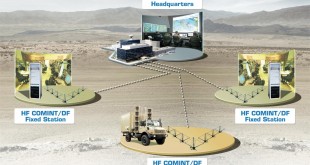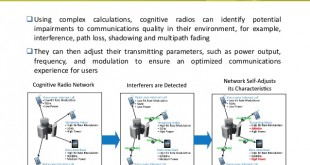The most important element of space is geosynchronous orbit, a circular orbit 22,300 miles above the planet where satellites appear to be stationary above the surface of the earth. British science fiction writer, futurist and inventor Arthur C. Clark mathematically determined the orbit in 1947, the general said. The …
Read More »Yearly Archives: 2018
Indian Army looks to tap renewables to supply power military installations and soldiers in high altitude areas such as Ladakh.
Ladakh accounts for more than two-thirds of the land area of the Indian state of Jammu & Kashmir. As a high altitude cold desert, though, it hosts only about 5% of the state’s population. With the mercury dipping to minus 20 degrees Celsius or lower during winter nights, and about minus …
Read More »New HF COMINT systems are being introduced to intercept communications of militaries, terrorists, illegal immigrants, pirates and illegal fishermen
All modern forces depend on unimpeded access to, and use of, the EM spectrum in conducting military operations. Therefore, there is a requirement to gain and maintain an advantage in the electromagnetic spectrum by countering adversary’s systems and protecting one’s own systems. Adversary can disrupt and degrade the navigation systems …
Read More »Nanofluids for thermal management of Space and Nuclear systems, military vehicles and submarines, power electronics and directed-energy weapons
Because of higher density chips, the design of more compact electronic components makes heat dissipation even more difficult. All advanced electrical or electronic devices are facing heat management challenges due to the increased levels of heat generation and the reduction in the surface area for heat rejection or dissipation. So …
Read More »Navies plan to use Intelligent Virtual Assistant (IVA) and Deep Machine Learning (DML) technologies to enhance situational awareness and battlespace decision making
Autonomous systems are increasingly critical to several current and future Department of Defense (DoD) mission needs. For example, the U.S. Army Robotics and Autonomous Systems (RAS) strategy report for 2015-2040 identifies a range of capability objectives, including enhanced situational awareness, cognitive workload reduction, force protection, cyber defense, logistics, etc, that …
Read More »New electronic components and materials for extreme environments like Hypersonic flight , Planetary exploration and Military Systems
“Electronics have dramatically changed the way we live, conduct business, communicate, and educate. Visions of the future foretell of ubiquitous computing and sensing. However, the environments in which electronics can reliably operate are limited. In consumer applications, typical operating temperatures range from -40° to 85°C. The “wider” military temperature range …
Read More »The shortages of cyber warriors are driving Militaries to recruit geek armies to complement their cyber force.
The incidents of cyberwarfare are ever increasing, targeting more and more countries and becoming legitimate. Part of the Ukrainian power grid was attacked by hackers, causing blackouts; US accused Iranians of attempting to hack into the control-system of a dam. Russia was also suspected for cyber-attack on Turkey following the …
Read More »New Materials for Warships include carbon and glass fibre, aluminium, syntactic foam, copper and graphene
To date, different types of carbon and alloy steels have proved to be the main materials of choice for naval ship construction around the world. While composites, titanium and aluminium alloys have been utilized for making hulls of smaller vessels such as patrol boats, these materials do not meet the …
Read More »DARPA CommEx developed cognitive radio technologies that maintain communications even under severe jamming environment
Russia, has displayed jamming and spoofing capabilities in the ongoing conflicts in Ukraine and Syria in the last several years. The use of Russian technology in these conflicts demonstrated that Russia retains advanced electronic warfare capabilities. Russia has deployed Electronic Intelligence (ELINT) and SIGINT aircraft, such as the Il-20, …
Read More »DARPA’s M3IC developing critical magnetic components for future AESA based radars, communication and electronic warfare systems
Next-generation radar systems are critical to providing situational awareness of the entire networked battlefield. Active Electronically Steered Array (AESA) antennas have revolutionized the performance of modern radars, communication and electronic warfare systems by greatly reducing the maintenance costs and failure rates, enhancing scanning speed and accuracy, more resistant to interference …
Read More » International Defense Security & Technology Your trusted Source for News, Research and Analysis
International Defense Security & Technology Your trusted Source for News, Research and Analysis









